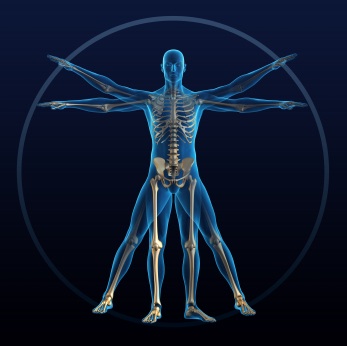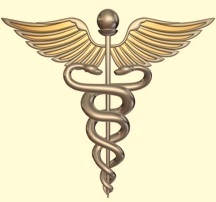A Guide for Physicians
and Other Healthcare Providers
Types of Patients Encountered in a Clinical Medical Practice
"It is much more important to know what sort of a patient has a disease than what sort of a disease a patient has." - Sir William Osler

There are obviously many types of patients that we encounter every day, many more than what could be listed here. Those outlined below are some of the more common ones that we see that may require a certain degree of art and finesse to provide the best experience for them and secondarily for us.
Categorizing people in this way runs the risk of suggesting that patients can easily be “pigeon-holed” into one category or another. Nothing could be further from the truth since each person is a unique blend of various entities much more complicated than what can be described by one characteristic. However, at certain times and in certain circumstances, certain types of behaviors come to the forefront that may require special consideration on your part in tempering and adjusting your response so that the end result is acceptable to all, hopefully.
Know Thyself

Before evaluating different characteristics of patients, the first analysis in this discussion should be directed to yourself. Knowing what your specific characteristics and traits are will provide insight into knowing what your initial response to certain situations will be. You may be able to use these characteristics beneficially as they are, or you may need to consciously make adjustments to your instinctive reaction to a condition so that you don’t make a bad experience even worse.
You need to ask yourself questions like…
Am I easily angered, saddened, defensive or phobic about certain situations?
Am I too cavalier or too abrupt in my speech?
What is my level of tolerance or patience?
How flexible am I?
Am I too strong when I need to be mellower, or am I too meek when I need to be stronger?
Do I have a sense of humor?
Am I congenial or more on the side of anti-social?
Am I usually calm or do I become anxious easily?
Do I take criticism well?
Do I need to be in control of every conversation?
How compassionate am I?
If you think about it, you could ask yourself a lot of these kinds of questions. If they are easy for you to answer, then you probably know yourself pretty well. The point is that you should know in the beginning what your inner reaction will be to a certain condition and then alter that reaction a little before it gets to the outside when it’s necessary to do so.
An interesting exercise would be to think about how you answered some of the above questions and what emotional response would be instinctively elicited in you when you have an encounter with one of the following patient-types. Then think about how you might temper that initial reaction and adjust it consciously to provide for the best outcome from the encounter.

Types of Patients
Certain characteristics of patients that may be encountered in clinical medicine…
Pleasant - These folks are the easiest to care for as you would expect but there are still certain cautions to consider, like (a) getting too attached, (b)the desire to be too reassuring and optimistic when realism may dictate otherwise, (c) the wish to please the patient and honor requests that may not be in the best interests of his/her medical care.
Courageous - These are the patients we all deeply admire for their strength, fortitude, perseverance and acceptance in the face of tremendous adversity. We don't know where they get this from, but we all wish and hope we have it ourselves when we need it.
Angry - Not pleasant initially, but usually manageable if you know how. The difficulty is in controlling your instinctive reaction to be angry in return. If you handle it well, usually the anger is short-lived, and there will still be a happy ending.
Manipulative - Frequently more challenging than many of the others. Unfortunately, these patients have learned certain behaviors that have resulted in getting personal attention and obtaining the desired self-centered results. They usually do not regard themselves as manipulative and don’t respond well to attempts to change their behavior.
Demanding - Also referred to as “high-maintenance”. They request lots of extra attention, more so than their condition usually requires. They require much more time and energy than average. Once again, they are not usually aware of this, and should not be judged harshly.
Drug-seeking - Sometimes easy to spot, but sometimes not. The continual request for higher doses of narcotics or sedatives in a situation where the symptoms far outweigh the physical findings is often a red flag. Again, it is important not to be judgmental. These people need help too but not more narcotics.
Direct - Those who tell it like it is. If they don’t agree with what you’re doing, they will immediately let you know. They want to be in control and are quite upset if they are not or if they don’t perceive that they are. They are not necessarily angry; they are just very vocal about their disagreements.
All-knowing - May or may not have had a brief medical background, but whatever you are discussing with them, they seem to have some limited knowledge about it that leads them to believe that they know a lot about it. They bring in articles for you to read so that you can become as knowledgeable about their conditions as they are.
Noncompliant - Frequently tend to be frustrating to health professionals, mostly because they usually don’t do what you think is best for them. We sometimes wonder why they bother to seek our advice when they’re not going to follow through with it anyway.
Anxious - Usually require more reassurance than most. Sometimes, you may tend to be too reassuring to get someone to calm down only to find out later that s/he truly has a serious problem. Hypochondriasis, phobias and panic attacks are more extreme examples of anxiety and can be very challenging. Be very careful attributing patients' symptoms to anxiety, stress or depression just because all the tests are normal.
Psychosomatic - May be some of the most difficult diagnostic dilemmas that you will face. Their complaints seem very real, but a specific diagnosis cannot be found to explain the symptoms. The clinician is constantly asking himself if he’s missing something. Lots of resources are used in various testing procedures. Ultimately, when confronted with the diagnosis that the symptoms are psychosomatic, patients often become very upset and disbelieving.
Depressed - Very common in private practice and fairly easy to diagnose most of the time; but again, many patients are very resistant to this as a diagnosis for their symptoms, so it has to be approached cautiously. The biggest difficulty with this type of patient is in recognizing suicidal tendencies, which are sometimes denied by certain patients and not always easy to see in a 15-minute office visit.
Suffering patients are in great need of our services, which unfortunately are denied too often because of the unreasonable fear of addiction, especially in those with incurable or terminal diseases.
Chronic pain - Those with nonmalignant illnesses causing pain are even more of a challenge. There seems to be a fine, but very blurred, line between need and abuse, which is not always easy to see. Most doctors are afraid to see these people because of the fear of serious retribution if anything goes wrong. This is sad because many of them truly are needlessly miserable and nonfunctional.
Dying patients are as much in need of our care at this time in their lives as ever, probably even more so, although there is sometimes a tendency for us to withdraw thinking there's not much else we can do. This is the time when they probably need you the most.
Geriatric patients also need special attention and consideration. Many are disabled, have 3 or 4 chronic illnesses, increased rates of depression and anxiety, and require a significant amount of patience and compassion from their caregivers, physicians and family in order to get by.
Combination of Patient Types
Of course in clinical practice, we often see various combinations of the above characteristics within many of our patients. For example, you may encounter a very pleasant, polite person who is also demanding and manipulative at the same time, or you may see a person who is very anxious about his or her health but noncompliant when it comes to doing anything to improve the situation. This is part of what makes practicing medicine so interesting and challenging at the same time.
* * * * *
The Challenge
Taking care of some of the above patient types may seem like a daunting task if you are just starting a medical or nursing career. The vast majority of people are very nice and very grateful for your care and are not at all difficult. As long as you are caring, concerned about their welfare and attentive to their needs, they will remain happy and be a pleasure to serve.
The above characteristics are those encountered in all walks of life. When people become ill and stressed, these traits may become exacerbated. It may be helpful to consider your response to these situations so that you can be prepared for them and actually improve upon the experiences and the relationships that you develop in your practice. The more you can understand these interactions, the more effective you will be as a physician or other health professional.
Ref: Kahn, M.W., "Becoming a Physician: What Would Osler Do? Learning from 'Difficult' Patients", NEJM, July 30,2009, 361:442-3.

This page was last updated on October 20, 2019.
Disclaimer | Privacy Policy | Copyright | Sitemap | Contact | Comments
















 On this day of giving thanks, I am reminded of all of those who have supported this site over the years. I welcome your comments, your guest articles, and your readership. I am deeply grateful for all…
On this day of giving thanks, I am reminded of all of those who have supported this site over the years. I welcome your comments, your guest articles, and your readership. I am deeply grateful for all…

